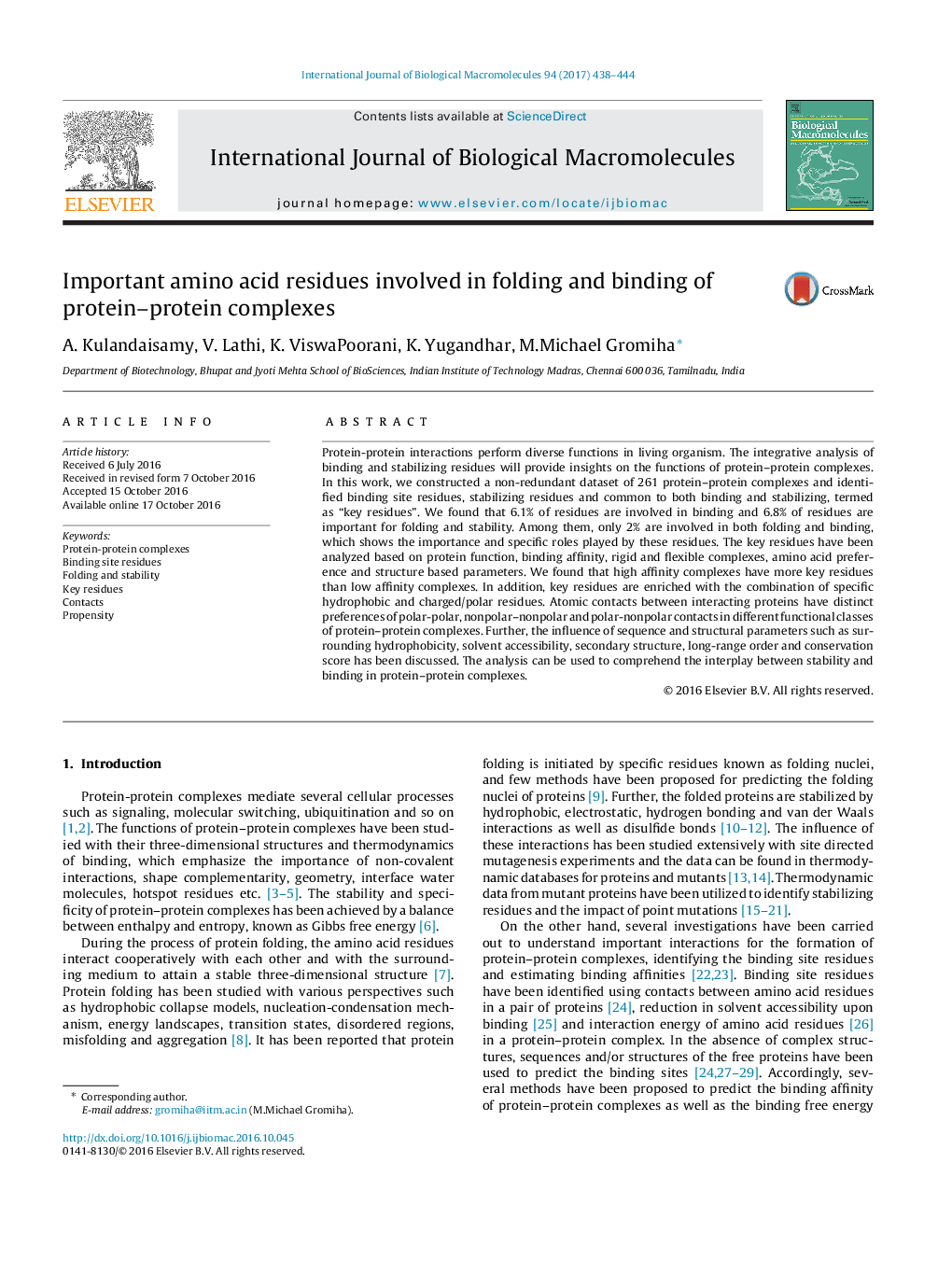| Article ID | Journal | Published Year | Pages | File Type |
|---|---|---|---|---|
| 5512517 | International Journal of Biological Macromolecules | 2017 | 7 Pages |
Protein-protein interactions perform diverse functions in living organism. The integrative analysis of binding and stabilizing residues will provide insights on the functions of protein-protein complexes. In this work, we constructed a non-redundant dataset of 261 protein-protein complexes and identified binding site residues, stabilizing residues and common to both binding and stabilizing, termed as “key residues”. We found that 6.1% of residues are involved in binding and 6.8% of residues are important for folding and stability. Among them, only 2% are involved in both folding and binding, which shows the importance and specific roles played by these residues. The key residues have been analyzed based on protein function, binding affinity, rigid and flexible complexes, amino acid preference and structure based parameters. We found that high affinity complexes have more key residues than low affinity complexes. In addition, key residues are enriched with the combination of specific hydrophobic and charged/polar residues. Atomic contacts between interacting proteins have distinct preferences of polar-polar, nonpolar-nonpolar and polar-nonpolar contacts in different functional classes of protein-protein complexes. Further, the influence of sequence and structural parameters such as surrounding hydrophobicity, solvent accessibility, secondary structure, long-range order and conservation score has been discussed. The analysis can be used to comprehend the interplay between stability and binding in protein-protein complexes.
